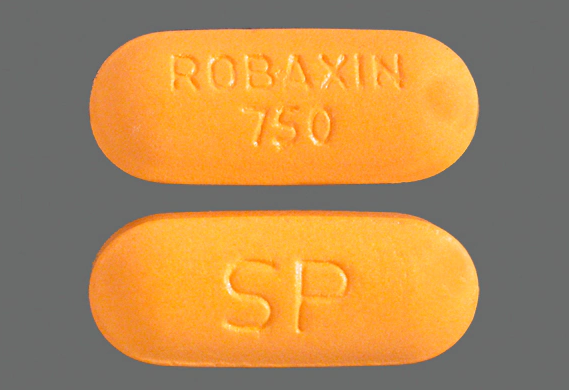Robaxin is the brand name for methocarbamol, a prescription medication used as a muscle relaxant.
It is primarily used to:
- Relieve muscle spasms
- Reduce pain and discomfort caused by strains, sprains, or other muscle injuries
- Sometimes assist in the treatment of tetanus, a rare but serious bacterial infection
How It Works:
Methocarbamol works by depressing the central nervous system (CNS). Unlike some other muscle relaxants, it does not act directly on the muscles, but instead reduces nerve impulses or pain sensations that are sent to the brain.
Common Uses:
- Muscle spasms from back pain or injury
- Muscle pain from overexertion or trauma
- Supportive treatment for tetanus (usually in hospital settings)
Dosage and Administration:
- Typically taken orally in tablet form
- Often prescribed multiple times per day for short-term use
- May also be given intravenously or intramuscularly in a clinical setting
Common Side Effects:
- Drowsiness
- Dizziness
- Headache
- Nausea or upset stomach
Warnings:
- Can cause drowsiness, so avoid driving or operating machinery until you know how it affects you
- Should be used cautiously in combination with alcohol or other CNS depressants
- Not typically recommended for long-term use
Let me know if you want information on how Robaxin compares to other muscle relaxants like cyclobenzaprine or baclofen.
What other drugs will affect Robaxin?
Robaxin (methocarbamol) can interact with other drugs, especially those that also affect the central nervous system (CNS). These interactions can increase side effects such as drowsiness, dizziness, or slowed breathing, and in some cases may pose serious health risks.
🔄 Common Drug Interactions with Robaxin
1. CNS Depressants
These drugs increase sedation or drowsiness when taken with Robaxin:
- Opioids (e.g., oxycodone, hydrocodone, morphine)
- Benzodiazepines (e.g., diazepam, lorazepam, alprazolam)
- Sleep aids (e.g., zolpidem, eszopiclone)
- Antipsychotics (e.g., quetiapine, risperidone)
- Barbiturates (e.g., phenobarbital)
- Alcohol
Caution: Combining these can lead to respiratory depression, excessive sedation, or coma.
2. Other Muscle Relaxants
Taking Robaxin with similar medications (like cyclobenzaprine, baclofen, or carisoprodol) can enhance sedative effects and increase the risk of side effects without added benefit.
3. Anticholinergic Drugs
Robaxin may increase side effects like dry mouth, blurred vision, or constipation when combined with:
- Antihistamines (e.g., diphenhydramine, chlorpheniramine)
- Tricyclic antidepressants (e.g., amitriptyline, nortriptyline)
- Drugs for Parkinson’s disease (e.g., benztropine)
4. Seizure Medications
- Drugs like phenytoin or carbamazepine can have altered blood levels when used with methocarbamol, although this is not common.
- Methocarbamol may interfere with certain lab tests (e.g., falsely elevating serum bilirubin or interfering with urine tests for certain substances).
🔬 Other Considerations
- Robaxin and alcohol: Both depress the CNS, and their combination significantly increases the risk of sedation, dizziness, or impaired coordination.
- Elderly patients: More sensitive to CNS effects, especially when multiple interacting drugs are used.
- Driving or operating machinery: Avoid if taking Robaxin with other sedating medications.
✅ Always Inform Your Doctor If You’re Taking:
- Pain medications
- Sleeping pills
- Anxiety or depression meds
- Seizure meds
- Allergy medications
- Herbal supplements or over-the-counter drugs
For more Robaxin Interaction information, please check this link

